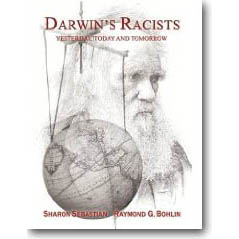Meic Pearse’s book The Gods of War gives great insight into the charge that religion is the cause of most war. History shows this is not true: the cause of most war is the sinful human heart, even when religion is invoked as a reason.
The Accusation
Sam Harris, the popular author and atheist, says that “for everyone with eyes to see, there can be no doubt that religious faith remains a perpetual source of human conflict.”{1} Writing for the Freedom from Religion Foundation, fellow atheist Richard Dawkins adds, “Only the willfully blind could fail to implicate the divisive force of religion in most, if not all, of the violent enmities in the world today.”{2} Speaking more bluntly, one British government official has said, “theocrats, religious leaders or fanatics citing holy texts . . . constitutes the greatest threat to world peace today.”{3}

War is the ultimate act of intolerance, and since intolerance is seen as the only unforgivable sin in our postmodern times, it’s not surprising that those hostile to religion would charge people holding religious convictions with the guilt for causing war.
This view is held by many others, not just despisers of religion. A 2006 opinion poll taken in Great Britain found that 82% of adults “see religion as a cause of division and tension between people. Only 16% disagree.”{4}
To be honest, religion has been, and remains, a source of conflict in the world; but to what degree? Is it the only source of war, as its critics argue? Is it even the primary source? And if we agree that religion is a source of war, how do we define what qualifies as a religion? This leads to another question. Are all religions equally responsible for war or are some more prone to instigate conflict than others? Once these issues are decided, we are still left with one of the most difficult questions: How does a religious person, especially a Christian, respond to the question of war?
When confronted with the accusation that religion, and more importantly, Christianity, has been the central cause of war down through history, most Christians respond by ceding the point. We will argue that the issue is far too complex to merely blame war on religious strife. A more nuanced response is needed. Religion is sometimes the direct cause of war, but other times it plays a more ambiguous role. It can also be argued, as Karl Marx did, that religion can actually restrain the warring instinct.
In his provocative new book, The Gods of War, Meic Pearse argues that modern atheists greatly overstate their case regarding religion as a cause for war, and that all religions are not equal when it comes to the tendency to resort to violence. He believes that the greatest source for conflict in the world today is the universalizing tendencies of modern secular nations that are pressing their materialism and moral relativism on more traditional cultures.
The Connection Between Religion and War
When someone suggests a simple answer to something as complex as war, it probably is too simple. History is usually more complicated than we would like it to be.
How then should Christians respond when someone claims religion is the cause of all wars? First, we must admit that religion can be and sometimes is the cause of war. Although it can be difficult to separate political, cultural, and religious motivations, there have been instances when men went off to war specifically because they believed that God wanted them to. That being said, in the last one hundred years the modern era with its secular ideologies has generated death and destruction on a scale never seen before in history. Not during the Crusades, the Inquisition, nor even during the Thirty Years War in Europe.
The total warfare of the twentieth century combined powerful advances in war-making technologies with highly structured societies to devastating effect. WWI cost close to eight and a half million lives. The more geographically limited Russian Civil War that followed the Bolshevik Revolution in 1917 resulted in nine million deaths. WWII cost sixty million deaths, as well as the destruction of whole cities by fire bombing and nuclear devices.
Both Nazi fascism and communism rejected the Christian belief that humanity holds a unique role in creation and replaced it with the necessity of conflict and strife. By the end of the nineteenth century, Darwin’s ideas regarding natural selection and survival of the fittest had begun to affect philosophy, the social sciences, and even theology. Darwin had left us with a brutal universe devoid of meaning. The communist and fascist worldviews were both firmly grounded in Darwin’s universe.
Hitler’s obsession with violence is well known, but the communists were just as vocal about their attachment to it. Russian revolution leader Leon Trotsky wrote, “We must put an end once and for all to the papist-Quaker babble about the sanctity of human life.” Lenin argued that the socialist state was to be “a system of organized violence against the bourgeoisie” or middle class. While critics of the Russian Tsar and his ties with the Orthodox Russian Church could point to examples of oppression and cruelty, one historian has noted that when the communists had come to power “more prisoners were shot at just one soviet camp in a single year than had been executed by the tsars during the entire nineteenth century.”{5}
So, religion is not the primary cause of warfare and cruelty, at least not during the last one hundred years. But what about wars fought in the more distant past; surely most of them were religiously motivated. Not really.
Meic Pearce argues that “most wars, even before the rise of twentieth century’s secularist creeds, owed little or nothing to religious causation.”{6} Considering the great empires of antiquity, Pearce writes that “neither the Persians nor the Greeks nor the Romans fought either to protect or to advance the worship of their gods.”{7} Far more ordinary motives were involved like the desire for booty, the extension of the empire, glory in battle, and the desire to create buffer zones with their enemies. Each of these empires had their gods which would be called upon for aid in battle, but the primary cause of these military endeavors was not the advancement of religious beliefs.
Invasions by the Goths, Huns, Franks, and others against the Roman Empire, attacks by the Vikings in the North and the Mongols in Asia were motivated by material gain as well and not religious belief. The fourteenth century conquests of Timur Leng (or Tamerlane) in the Middle East and India resulted in the deaths of millions. He was a Muslim, but he conquered Muslim and pagan alike. At one point he had seventy thousand Muslims beheaded in Baghdad so that towers could be built with their skulls.{8}
More recently, the Hundred Years War between the French and English, the American Revolution, and the Napoleonic Wars were secular conflicts. Religious beliefs might have been used to wrap the conflicts with a Christian veneer, but promoting the cause of Christ was not at the heart of the conflicts.
Pearce argues that down through the millennia, humanity has gone to war for two main reasons: greed expressed by the competition for limited resources, and the need for security from other predatory cultures. The use of religion as a legitimating device for conflict has become a recent trend as it became less likely that a single individual could take a country to war without the broad support of the population.
It can be argued that religion was, without ambiguity, at the center of armed conflict during two periods in history. The first was during the birth and expansion of Islam which resulted in an ongoing struggle with Christianity, including the Crusades during the Middle Ages. The second was the result of the Reformation in Europe and was fought between Protestant and Catholic states. Even here, political motivations were part of the blend of causes that resulted in armed conflict.
Islam and Christianity
Do all religions have the same propensity to cause war? The two world religions with the largest followings are Christianity and Islam. While it is true that people have used both belief systems to justify armed conflict, are they equally likely to cause war? Do their founder’s teachings, their holy books, and examples from the earliest believers encourage their followers to do violence against others?
Although Christianity has been used to justify forced conversions and violence against unbelievers, the connection between what Christianity actually teaches and these acts of violence has been ambiguous at best and often contradictory. Nowhere in the New Testament are Christians told to use violence to further the Kingdom of God. Our model is Christ who is the perfect picture of humility and servant leadership, the one who came to lay down his life for others. Meic Pearce writes, “For the first three centuries of its history, Christianity was spread exclusively by persuasion and was persecuted for its pains, initially by the Jews but later, from 63, by the Romans.”{9} It wasn’t until Christianity became the de facto state religion of the Roman Empire around AD 400 that others were persecuted in the name of Christ.
The history of Islam is quite different. Warfare and conflict are found at its very beginning and is embodied in Muhammad’s actions and words. Islam was initially spread through military conquest and maintained by threat of violence. As one pair of scholars puts it, there can be no doubt that “Islam was cradled in violence, and that Muhammad himself, through the twenty-six or twenty-seven raids in which he personally participated, came to serve for some Muslims as a role model for violence.”{10}
Much evidence can be corralled to make this point. Muhammad himself spoke of the necessity of warfare on behalf of Allah. He said to his followers, “I was ordered to fight all men until they say, ‘There is no God but Allah.’”{11} Prior to conquering Mecca, he supported his small band of believers by raiding caravans and sharing the booty. Soon after Muhammad’s death, a war broke out over the future of the religion. Three civil wars were fought between Muslims during the first fifty years of the religion’s history, and three of the four leaders of Islam after Muhammad were assassinated by other Muslims. The Quran and Hadith, the two most important writings in Islam, make explicit the expectation that all Muslim men will fight to defend the faith. Perhaps the most telling aspect of Islamic belief is that there is no separation between religious and political authority in the Islamic world. A threat to one is considered a threat to the other and almost guarantees religiously motivated warfare.
Pacifism or Just Wars?
Although most Christians advocate either pacifism or a “just war” view when it comes to warfare and violence, Pearse argues that there are difficulties with both. Pacifism works at a personal level, but “there cannot be a pacifist state, merely a state that depends on others possessed of more force or of the willingness to use it.”{12} Some pacifists argue that humans are basically good and that violence stems from misunderstandings or social injustice. This is hardly a traditional Christian teaching. Pearse argues that “a repudiation of force in all circumstances . . . is an abandonment of victims—real people—to their fate.”{13}
Just war theory as advocated by Augustine in the early fifth century teaches that war is moral if it is fought for a just cause and carried out in a just fashion. A just cause bars wars of aggression or revenge, and is fought only as a last resort. It also must have a reasonable chance of success and be fought under the direction of a ruler in an attitude of love for the enemy. It seeks to reestablish peace, not total destruction of the vanquished, and to insure that noncombatants are not targeted.
However, even WWII, what many believe to be our most justified use of force, failed to measure up to this standard. Massive air raids against civilian populations by the Allies were just one of many violations that disallow its qualification as a just war. As Pearse argues, “war has an appalling dynamic of its own: it drags down the participants . . . into ever more savage actions.”{14}
How then are Christians to think about war and violence? Let’s consider two examples. In the face of much violent opposition in his battle for social justice, Martin Luther King said, “be ye assured that we will wear you down by our capacity to suffer. . . . We shall so appeal to your heart and conscience that we shall win you in the process.”{15} Reform was achieved, although at the cost of his life, and many hearts and minds have been changed.
However, another martyr, German minister Dietrich Bonhoeffer, rejected pacifism and chose to participate in an attempt on the life of Adolf Hitler, mainly because he despaired that an appeal to the hearts and minds of the Nazis would be effective.
Neither King nor Bonhoeffer were killed specifically for their faith. They were killed for defending the weak from slaughter, as Pearse puts it. Perhaps Pearse is correct when he argues, “If Christians can . . . legitimately fight . . . , then that fighting clearly cannot be for the faith. It can only be for secular causes . . . faith in Christ is something for which we can only die—not kill. . . . To fight under the delusion that one is thereby promoting Christianity is to lose sight of what Christianity is.”{16}
Notes
1. Meic Pearse, The Gods of War (Downers Grove, IL: InterVarsity Press, 2007), 16.
2. Ibid., 15.
3. Ibid.
4. Ibid., 14.
5. Ibid., 31.
6. Ibid., 53.
7. Ibid., 54.
8. Ibid., 55.
9. Ibid., 134.
10. Ibid., 58.
11. Ibid., 59.
12. Ibid., 173.
13. Ibid., 175.
14. Ibid., 173.
15. Ibid., 180.
16. Ibid.
© 2008 Probe Ministries
 I recently coauthored a book with Sharon Sebastian entitled Darwin’s Racists: Yesterday, Today, and Tomorrow. In chapter three we discuss Darwin’s explanation of the differences between men and apes from The Descent of Man.
I recently coauthored a book with Sharon Sebastian entitled Darwin’s Racists: Yesterday, Today, and Tomorrow. In chapter three we discuss Darwin’s explanation of the differences between men and apes from The Descent of Man.
